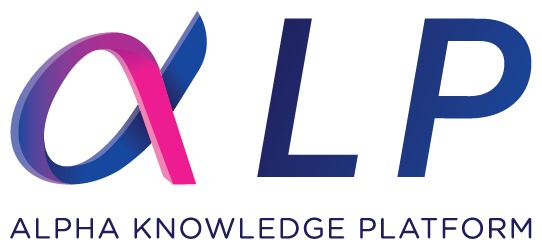TickerTape
Weekly Global Stablecoin & CBDC Update

This Week's Stories
The European Central Bank publishes an outcome report on the pioneers and visionaries workstreams. Digital Euro Innovation Platform convened nearly 100 banks, fintechs, merchants, and academics in an ambitious collaborative effort to shape the future of European payments. Participants worked in two streams: “visionaries” contributed fresh ideas on the digital euro’s potential in daily life, while “pioneers” ran technical trials focused on programmable, conditional payments. Solutions ranged from event-driven payouts, digital e-receipts, smart wallets with voice/AI interfaces, streamlined transport payments, and inclusive financial tools to facilitate access. This pioneering initiative highlights the ECB’s commitment to joint experimentation and ecosystem building, supporting both innovation and interoperability for Europe’s evolving payments landscape. The results reveal practical paths for digital euro possibilities in sectors from commerce to transportation, with a strong focus on privacy, efficiency, and user empowerment.
Key Takeaways:
- Conditional payments power “pay-on-delivery” and milestone-based uses for greater transactional trust.
- Privacy-protecting e-receipts simplify document management for users and businesses.
- AI/voice-activated smart wallets drive inclusion and usability.
- Next-generation transport payments support fare-capping, tap-and-go, and cross-border travel.
- B2B programmable payments and split disbursement models advance business efficiency and transparency.
Why It Matters:
- Demonstrates pan-European collaboration toward standardized, innovative payments infrastructure.
- Tests show real-use cases that can drive digital euro adoption and everyday relevance.
- Strengthens privacy, control, and flexibility for merchants and consumers.
- Supports development of new business models and operational efficiencies across sectors.
- Reinforces Europe’s monetary sovereignty and competitive edge in digital finance.
Plasma, a Layer-1 blockchain designed specifically for stablecoin payments, announced that stablecoin supply on its network surpassed $7 billion within just two days of its mainnet beta launch on September 25, 2025. The platform initially attracted $2 billion in stablecoin deposits on its first day, establishing it as the 8th largest blockchain by stablecoin supply. Plasma’s architecture focuses on high-volume, low-cost transactions with zero-fee USDT transfers and compatibility with the Ethereum Virtual Machine, enabling seamless deployment of decentralized finance projects. The rapid adoption demonstrates strong market demand for specialized stablecoin infrastructure that can process thousands of transactions per second with minimal fees.
Key Takeaways:
- Plasma achieves $7 billion in stablecoin supply within 48 hours of mainnet beta launch
- Platform ranks as 8th largest blockchain by stablecoin supply after first-day $2 billion deposit milestone
- Zero-fee USDT transfers and EVM compatibility drive rapid DeFi project adoption
- Daily stablecoin inflows average approximately $7 billion, indicating sustained user engagement
Why It Matters:
- Demonstrates significant market demand for specialized blockchain infrastructure focused on stablecoin efficiency
- Positions Plasma as potential competitor to established payment blockchains like Tron and BNB Chain
- Validates business model of purpose-built networks optimized for specific use cases rather than general computing
- Could accelerate institutional adoption of blockchain-based payment systems through improved cost structure
Iran’s Central Bank High Council imposed strict limits on stablecoin transactions, capping annual purchases at $5,000 per person and total holdings at $10,000, as the Iranian rial plummeted to a historic low of 1,136,500 per US dollar. The restrictions apply to all traders and users on licensed digital platforms and must be implemented within a one-month transition period for existing holders to comply. Secretary Asghar Abolhasani confirmed that stablecoins, particularly Tether (USDT), have become essential for Iranian households seeking to protect savings from inflation and facilitate money transfers abroad despite formal banking system restrictions. The measures coincide with the looming return of UN sanctions and represent authorities’ attempt to reduce dependence on foreign currency during the ongoing currency crisis.
Key Takeaways:
- Iran caps stablecoin purchases at $5,000 annually per person with $10,000 maximum holdings
- One-month transition period mandated for existing holders to comply with new limits
- Iranian rial hits all-time low of 1,136,500 per US dollar amid economic crisis
- Restrictions target widespread use of USDT as inflation hedge and remittance tool
Why It Matters:
- Demonstrates how economic sanctions and currency instability drive stablecoin adoption in developing economies
- Highlights tension between government monetary control and citizens’ desire for currency stability
- Could influence other countries facing similar economic pressures to implement stablecoin restrictions
- Illustrates stablecoins’ role as financial lifeline in economies with unstable national currencies
Vietnam’s government officially launched a five-year pilot program for crypto asset trading through Resolution 05/2025/NQ-CP, signed by Deputy Prime Minister Ho Duc Phoc on September 9, 2025. The comprehensive framework governs issuance, trading, custody, and service provision for crypto assets, requiring all market participants to comply with anti-money laundering, terrorism financing prevention, information security, and cybersecurity regulations. Foreign investors may freely subscribe and trade crypto assets, while domestic investors are restricted to trading assets acquired before the resolution’s effective date. After six months from the first service provider’s licensing, all domestic crypto transactions must occur through licensed organizations, with violations subject to administrative sanctions or criminal liability examination.
Key Takeaways:
- Five-year crypto asset pilot program launched September 9, 2025, through Resolution 05/2025/NQ-CP
- Foreign investors permitted unlimited participation while domestic trading restricted to pre-existing holdings
- Mandatory licensing through Ministry of Finance required for all crypto asset service providers
- Securities tax regime temporarily applied to crypto transactions until specific regulations developed
Why It Matters:
- Positions Vietnam as progressive jurisdiction embracing regulated crypto innovation in Southeast Asia
- Addresses $100+ billion annual crypto transaction volume currently conducted on offshore exchanges
- Could serve as regulatory template for other emerging economies developing crypto frameworks
- Demonstrates government strategy to formalize crypto activity within domestic financial system oversight
European Central Bank Executive Board member Piero Cipollone delivered a keynote address in Milan on September 26, 2025, emphasizing the transformative role of digitalization in reshaping finance and payments. Speaking at “The Future of Payments: CBDC, Digital Assets and Digital Capital Markets” conference, Cipollone addressed the imperative to ensure technological transformation translates into genuine benefits for society and the economy. As chair of the Eurosystem High-Level Task Force on the Digital Euro, he outlined the ECB’s approach to balancing innovation with monetary autonomy and financial stability. The address covered critical challenges in digital currency development, including privacy preservation, economic efficiency, and the integration of public and private sector solutions in the evolving payments landscape.
Key Takeaways:
- ECB Executive Board member delivers major digital euro policy address in Milan
- Conference focuses on integration of CBDCs, digital assets, and capital markets transformation
- Cipollone chairs Eurosystem’s High-Level Task Force responsible for digital euro development
- Address emphasizes balance between innovation benefits and monetary system stability
Why It Matters:
- Provides high-level European policy perspective on global digital currency competition
- Demonstrates ECB’s commitment to proactive digital euro development and implementation
- Addresses fundamental design decisions that will shape European digital currency adoption
- Signals continued European focus on maintaining monetary sovereignty amid technological transformation
Circle, issuer of the $74 billion USDC stablecoin, announced it is exploring mechanisms to enable transaction reversals for fraud prevention and dispute resolution, marking a significant departure from blockchain’s traditional immutability principles. Circle President Heath Tarbert confirmed the company is “thinking through whether or not there’s the possibility of reversibility of transactions” while maintaining settlement finality. The initiative aims to align stablecoins with traditional finance standards where refunds and chargebacks are standard practices. Circle is testing this capability through its new institutional blockchain Arc, which would allow counter-payments through off-chain agreements similar to credit card refund systems, rather than direct on-chain reversals.
Key Takeaways:
- Circle exploring reversible transactions for USDC to reduce fraud and align with traditional finance expectations
- New Arc blockchain designed for institutional use will support counter-payment mechanisms for transaction disputes
- Initiative aims to make stablecoins more appealing to banks and asset managers concerned about irreversible errors
- Feature would operate through off-chain agreements rather than compromising blockchain immutability
Why It Matters:
- Represents fundamental shift in stablecoin design philosophy to accommodate institutional needs
- Could accelerate mainstream adoption by addressing traditional finance industry’s key concerns about blockchain payments
- May influence other stablecoin issuers to develop similar reversibility mechanisms
- Highlights ongoing tension between blockchain’s decentralized ethos and institutional compliance requirements
SWIFT announced at the Sibos conference in Frankfurt that it will integrate a blockchain-based shared ledger into its infrastructure, collaborating with over 30 major global banks including JPMorgan Chase, HSBC, Deutsche Bank, and Bank of America. The initiative focuses on enabling real-time, 24/7 cross-border payments and supporting various forms of digital money across SWIFT’s network of 11,000 banks in 200+ countries. The shared ledger will log, sequence, and validate transactions while enforcing regulations through smart contracts, initially working with blockchain software developer ConsenSys on a conceptual prototype. This represents SWIFT’s strategy of “upgrading existing rails while creating future digital rails” to maximize infrastructure choice for the financial industry.
Key Takeaways:
- SWIFT partnering with 30+ global banks to integrate blockchain ledger for instant cross-border payments
- Shared ledger will support multiple forms of digital money while maintaining regulatory compliance through smart contracts
- Initiative addresses growing demand for 24/7 payment capabilities across SWIFT’s global network
- ConsenSys partnership focuses on interoperability across existing and emerging payment systems
Why It Matters:
- Positions SWIFT to compete with emerging payment networks and prevent disintermediation by blockchain alternatives
- Could significantly reduce settlement times and costs for international transactions across traditional banking
- Demonstrates established financial infrastructure embracing blockchain technology for system-wide modernization
- May accelerate institutional adoption of digital currencies by providing familiar, regulated payment rails
Cryptocurrency exchange Kraken completed a $500 million funding round at a $15 billion valuation, positioning the company for its anticipated initial public offering in 2026. The funding round was completed without a lead investor, with Kraken setting the terms including the valuation, which represents an increase from its $11 billion valuation in 2022. Co-CEO Arjun Sethi’s Tribe Capital participated in the round alongside various investment managers and venture capitalists. The exchange reported strong financial performance with $411 million in Q2 2025 revenue and $80 million in post-EBITDA earnings, while processing approximately $1.9 billion in daily trading volume and ranking among the top 15 global cryptocurrency exchanges.
Key Takeaways:
- Kraken raises $500 million at $15 billion valuation in preparation for 2026 IPO
- Company reports $411 million Q2 revenue with robust $80 million post-EBITDA earnings
- Market share in fiat-to-crypto transactions increased to 68% from 43% previously
- Exchange processes $1.9 billion daily trading volume, ranking in top 15 globally
Why It Matters:
- Demonstrates continued investor confidence in cryptocurrency exchange business models amid regulatory clarity
- Positions Kraken as second-largest private crypto exchange by valuation after successful institutional expansion
- Could influence timing and valuations for other crypto companies considering public offerings
- Validates crypto industry maturation with established exchanges achieving traditional finance-scale valuations
Stablecoins recorded unprecedented net inflows of $45.6 billion in Q3 2025, representing a 324% surge from the $10.8 billion recorded in Q2 2025, according to RWA.xyz data. Tether’s USDT led with $19.6 billion in net inflows, followed by Circle’s USDC with $12.3 billion and Ethena’s USDe with $9 billion. The total stablecoin market capitalization reached approximately $290 billion, with Ethereum remaining the dominant network hosting $171 billion in stablecoin supply, while Tron ranked second with $76 billion. Despite strong inflows, monthly active addresses declined 22.6% to 26 million, and transfer volume decreased 11% to $3.17 trillion, suggesting concentrated institutional adoption rather than broad retail growth.
Key Takeaways:
- Stablecoin net inflows surge 324% quarter-over-quarter to record $45.6 billion in Q3 2025
- USDT maintains market leadership with $19.6 billion inflows, USDC adds $12.3 billion, USDe contributes $9 billion
- Total stablecoin market cap reaches $290 billion with Ethereum hosting $171 billion in supply
- Monthly metrics show declining active addresses (-22.6%) and transfer volume (-11%) despite growing market cap
Why It Matters:
- Demonstrates accelerating institutional adoption of stablecoins as core financial infrastructure
- Highlights shift from speculative retail usage toward professional and commercial applications
- Validates stablecoins’ role as essential bridge between traditional finance and digital asset ecosystems
- Supports projections of trillion-dollar stablecoin markets by decade’s end
Brex, the San Francisco-based intelligent finance platform, announced the launch of native stablecoin payments, positioning itself as the first global corporate card to enable instant balance payments with stablecoins. Starting with USDC integration, customers with Brex business accounts will be able to accept stablecoins with automatic conversion into USD, send stablecoins directly from USD balances, and pay card balances using stablecoins. The platform offers instant payments with zero fees, 24/7 global reliability, and consolidates traditional and stablecoin-backed spending in a single interface. Brex is collaborating with Column Bank N.A. to power its stablecoin offering and plans to support additional cryptocurrencies in future rollouts.
Key Takeaways:
- First global corporate card to offer instant stablecoin balance payments starting with USDC
- Zero-fee instant payments settling in seconds with 24/7 cross-border reliability
- Single consolidated platform managing both traditional and stablecoin-backed business transactions
- Column Bank partnership provides regulated infrastructure for stablecoin operations
Why It Matters:
- Bridges gap between traditional corporate finance and cryptocurrency payment systems
- Demonstrates institutional adoption of stablecoins for mainstream business operations
- Positions Brex competitively against traditional corporate payment platforms lacking crypto capabilities
- Validates stablecoins as practical solution for cross-border business transactions
Stripe introduced Open Issuance, a platform enabling businesses to launch and manage custom stablecoins with minimal coding requirements, built on Bridge infrastructure acquired for $1.1 billion in 2024. The service allows companies to mint and burn tokens freely, customize reserve structures, and choose between treasury bonds and cash backing managed by BlackRock, Fidelity, Superstate, and Lead Bank. Phantom Wallet’s CASH token represents the first major implementation, with MetaMask’s mUSD and Hyperliquid’s USDH also launching through the protocol. The platform promises interoperability between tokens and low-cost conversions, while businesses can launch stablecoins within days rather than months required for independent development.
Key Takeaways:
- Open Issuance enables custom stablecoin creation with “just a few lines of code”
- Reserve management handled by major institutions including BlackRock, Fidelity, and Superstate
- Phantom’s CASH token serves as inaugural launch with MetaMask and Hyperliquid following
- Platform promises days-to-launch timeline versus months for independent stablecoin development
Why It Matters:
- Democratizes stablecoin issuance for businesses without extensive blockchain development resources
- Leverages established financial institutions for reserve management and regulatory compliance
- Could accelerate proliferation of specialized stablecoins for niche business applications
- Positions Stripe as critical infrastructure provider for emerging stablecoin economy
Hong Kong’s Financial Services and Treasury Secretary Christopher Hui confirmed that the territory’s first stablecoin issuer license application window closed on September 30, 2025, as originally scheduled. The application process, which opened on August 1 following enactment of the Stablecoins Ordinance, remains on track to issue the first batch of licenses in early 2026. Hui emphasized that the licensing process is proceeding as planned, with initial focus on Hong Kong dollar-pegged stablecoins while legal provisions allow other fiat currency backing. The regulatory framework represents Hong Kong’s broader strategy to establish itself as a regulated global hub for digital assets, including NFTs and the planned e-HKD central bank digital currency.
Key Takeaways:
- September 30, 2025 deadline met for first-round stablecoin license applications in Hong Kong
- Early 2026 timeline maintained for issuing territory’s inaugural stablecoin licenses
- Initial regulatory focus on HKD-pegged stablecoins with provisions for other fiat currencies
- Framework supports Hong Kong’s broader digital asset hub ambitions including e-HKD development
Why It Matters:
- Establishes Hong Kong as first major Asian jurisdiction with comprehensive stablecoin regulation
- Creates competitive advantage for licensed issuers accessing Asian retail cryptocurrency markets
- Demonstrates commitment to balanced innovation supporting both consumer protection and market development
- Could influence regulatory approaches in other major financial centers seeking stablecoin frameworks
Brazilian Finance Minister Fernando Haddad expressed strong support for the country’s central bank digital currency project, known as Drex, while a controversial $19 billion Bitcoin strategic reserve proposal generates political debate. Haddad emphasized that Drex represents a modernization of Brazil’s monetary system that would enhance financial inclusion and reduce transaction costs for citizens. The CBDC initiative contrasts with legislative proposals suggesting Brazil should establish a significant Bitcoin reserve similar to strategies discussed in other countries. The finance minister stressed the importance of maintaining sovereign monetary policy through central bank-issued digital currency rather than relying on decentralized cryptocurrencies for national financial strategy.
Key Takeaways:
- Finance Minister Haddad endorses Drex CBDC as priority for monetary system modernization
- $19 billion Bitcoin strategic reserve proposal creates political tension over crypto policy direction
- CBDC positioned as tool for financial inclusion and reduced transaction costs
- Government emphasizes sovereign monetary control through central bank digital currency
Why It Matters:
- Represents major emerging economy’s commitment to state-controlled digital currency over private cryptocurrency
- Could influence other Latin American countries’ approaches to CBDC versus Bitcoin adoption
- Demonstrates ongoing global debate between central bank control and decentralized monetary alternatives
- Positions Brazil as leader in South American digital currency development and financial innovation
European Central Bank Executive Board member Fabio Panetta announced the launch of Project Pontes and Project Appia during a speech in Frankfurt on September 30, 2025, representing major initiatives to integrate central bank money with distributed ledger technology. Project Pontes will provide a bridge between DLT platforms and TARGET settlement services, with first release scheduled for 2026 enabling tokenized transactions to settle in central bank money. Project Appia explores longer-term approaches for more efficient European capital markets using distributed ledger technologies, potentially offering a shared ledger integrating central bank money, commercial bank money, and other assets. These projects aim to prevent market fragmentation while ensuring central bank money remains available in digital finance innovation.
Key Takeaways:
- Project Pontes launches to connect DLT platforms with TARGET settlement services by 2026
- Project Appia explores integrated European digital capital markets using shared ledger technology
- Initiatives ensure central bank money availability in emerging tokenized asset ecosystems
- Projects aim to prevent fragmentation while supporting digital finance innovation
Why It Matters:
- Positions ECB as proactive leader in blockchain integration for traditional financial infrastructure
- Addresses potential displacement of central bank money by private sector digital innovations
- Could establish European standard for central bank involvement in tokenized asset markets
- Demonstrates systematic approach to maintaining monetary sovereignty amid technological transformation
Integral, a global leader in FX and digital asset technology, launched PrimeOne, the world’s first stablecoin-based crypto prime brokerage built on the Codex Layer-1 EVM blockchain. The platform delivers institutional-grade credit, trading, and net settlement through a single integrated account, allowing clients to trade with leading crypto market makers and exchanges without maintaining separate relationships. PrimeOne’s on-chain infrastructure ensures clients retain asset control while USD stablecoin-based margin automatically moves between counterparties’ wallets in real-time, virtually eliminating counterparty credit risk. The service is already operational with customers including Virtu Financial and Europa Partners, offering streamlined onboarding with single AML/KYC checks and no credit requirements.
Key Takeaways:
- First stablecoin-based prime brokerage operational with major institutional clients including Virtu Financial
- Real-time margin exchange using USD stablecoins eliminates traditional counterparty credit risk
- Single account access to multiple crypto market makers and exchanges with streamlined compliance
- Built on Codex Layer-1 EVM blockchain ensuring client asset control and operational transparency
Why It Matters:
- Represents breakthrough in institutional crypto trading infrastructure using stablecoin technology
- Addresses major barrier to crypto adoption by eliminating credit risk through automated margin systems
- Could accelerate institutional participation in crypto markets through familiar prime brokerage model
- Validates stablecoins as foundational infrastructure for next-generation financial services
World Liberty Financial, the cryptocurrency venture associated with President Donald Trump’s family, announced plans to launch a debit card that will “bridge crypto assets with everyday spending” during the TOKEN2049 conference in Singapore. CEO Zach Witkoff confirmed that a pilot program will begin in the next quarter, with the debit card expected to launch in Q4 2025 or Q1 2026. The company is also exploring tokenization of physical commodities including oil, gas, cotton, and timber for blockchain-based trading. The announcement comes as World Liberty Financial’s USD1 stablecoin has grown to become the fifth-largest globally with a $2.7 billion market capitalization, while the firm’s WLFI governance token trades at $0.2011.
Key Takeaways:
- Crypto debit card pilot program launching next quarter with full deployment expected Q4 2025 or Q1 2026
- Company exploring tokenization of physical commodities including oil, gas, cotton, and timber
- USD1 stablecoin achieves fifth-largest global ranking with $2.7 billion market capitalization
- WLFI governance token provides voting rights on business changes within the DeFi protocol
Why It Matters:
- Represents significant expansion of Trump family’s crypto empire into mainstream payment infrastructure
- Could accelerate mainstream adoption of cryptocurrency payments through familiar debit card format
- Demonstrates growing institutional confidence in crypto-to-fiat payment bridges
- Positions World Liberty Financial to compete directly with traditional payment processors
The Aleo Network Foundation partnered with Paxos Labs to launch USAD, the first US dollar stablecoin issued on a layer-1 blockchain featuring end-to-end encryption and enhanced privacy capabilities. Built on Aleo’s zero-knowledge infrastructure, USAD encrypts wallet addresses, transaction amounts, and participant identities while maintaining regulatory compliance through Paxos Labs’ institutional-grade reserve management. The stablecoin addresses the privacy gap that has limited institutional adoption of blockchain-based financial infrastructure, where traditional stablecoins expose sensitive transaction data publicly on-chain. USAD is backed by regulated institutional-grade assets and combines smart contract programmability with confidential transaction processing.
Key Takeaways:
- First layer-1 stablecoin offering complete end-to-end encryption of transaction data and participant identities
- Paxos Labs provides regulated issuance framework backed by institutional-grade reserve assets
- Zero-knowledge technology ensures privacy while maintaining smart contract programmability
- Targets institutional clients concerned about public exposure of sensitive financial transaction data
Why It Matters:
- Addresses major barrier to institutional stablecoin adoption by solving blockchain transparency concerns
- Combines privacy features typically associated with privacy coins with stability of dollar-backed assets
- Could attract traditional financial institutions requiring confidential transaction processing
- Represents evolution of stablecoin design toward enterprise-grade privacy and compliance requirements
Bullish Exchange launched spot cryptocurrency trading operations in 20 US states following approval of BitLicense and Money Transmission License from the New York State Department of Financial Services. The institutionally-focused platform combines central limit order book functionality with Automated Market Maker technology, offering zero maker fees for institutional accounts and zero trading fees for individual users. Day-one institutional clients include BitGo and Nonco, with the platform targeting hedge funds, proprietary trading firms, market makers, and high-frequency traders. Bullish has processed over $1.5 trillion in cumulative trading volume since late 2021 and ranks among the top ten exchanges globally for Bitcoin and Ethereum trading volume.
Key Takeaways:
- BitLicense and Money Transmission License approval enables operations in 20 US states including New York, California, and Florida
- Zero fees structure for both institutional and individual accounts with hybrid CLOB-AMM liquidity model
- Launch clients include major institutional players BitGo and Nonco validating enterprise market fit
- Platform processes $1.5 trillion cumulative volume globally, ranking in top ten for BTC and ETH trading
Why It Matters:
- Demonstrates continued institutional crypto exchange expansion amid favorable regulatory environment
- BitLicense approval represents significant regulatory milestone for institutional-grade exchange operations
- Zero-fee model could pressure traditional exchanges to reduce pricing for institutional clients
- Validates growing institutional demand for compliant, high-performance crypto trading infrastructure
Visa announced at the Sibos 2025 conference a stablecoin prefunding pilot for Visa Direct, enabling businesses to pre-fund cross-border payments with stablecoins instead of traditional fiat currency. The initiative treats stablecoins as “money in the bank,” allowing Visa to release funds immediately while recipients still receive local currency payments. The pilot addresses cross-border payment inefficiencies by providing consistent settlement layers and reducing currency volatility exposure, with stablecoins moving significantly faster than traditional currency systems. Chris Newkirk, President of Commercial & Money Movement Solutions at Visa, emphasized that the integration will enable instant global money movement while giving businesses more payment flexibility.
Key Takeaways:
- Stablecoin prefunding through Visa Direct enables immediate fund release while maintaining local currency recipient experience
- Pilot addresses cross-border payment friction through faster settlement and reduced currency volatility exposure
- Initiative supported by US GENIUS Act regulatory framework providing stablecoin compliance clarity
- Limited availability expected by April 2026 following pilot program completion
Why It Matters:
- Represents major payment network’s commitment to integrating stablecoin technology into mainstream infrastructure
- Could significantly reduce cross-border payment settlement times from days to minutes
- Validates stablecoins as practical solution for international business payment challenges
- Positions Visa competitively against emerging blockchain-based payment alternatives
The European Central Bank’s Governing Council is scheduled to decide the future direction of the digital euro project after the current preparation phase concludes in October 2025. The ECB has indicated that a second phase of digital euro preparation will commence by October 2025, with comprehensive research and development work completed during the current phase. The digital euro initiative represents the European Union’s strategic response to compete with Bitcoin, cryptocurrencies, and dollar-dominated stablecoins while maintaining European monetary sovereignty. The October 2025 decision point will determine whether the project advances to implementation phases or requires additional preparation before launch.
Key Takeaways:
- ECB Governing Council decision on digital euro future expected following October 2025 preparation phase completion
- Second phase of digital euro development planned to commence by October 2025 timeline
- Project positioned as European response to Bitcoin, cryptocurrency, and stablecoin competition
- Decision will determine advancement to implementation phases versus continued preparation
Why It Matters:
- Represents critical juncture for European Union’s central bank digital currency strategy
- Could influence global CBDC development momentum if Europe advances to implementation
- Decision impacts competitive positioning against US stablecoin dominance and Chinese digital yuan
- May determine European monetary policy tools available for digital economy integration
The European Central Bank announced it has signed framework agreements with top-ranked technology providers to develop five core components for the potential retail digital euro. The selection follows a call for applications and a formal tender process. Agreements were signed for alias lookup (Sapient GmbH & Tremend Software Consulting, equensWorldline), risk/fraud management (Feedzai, Capgemini Deutschland), app/software development kit (Almaviva SpA & Fabrick SpA, Sapient GmbH & Tremend), offline solution (Giesecke+Devrient, second provider TBA), and secure exchange of payment info (Senacor FCS, equensWorldline). Implementation and payments will only proceed after EU legislation on the digital euro is adopted, with safeguards built into agreements for evolving regulatory scope.
Key Takeaways:
- Five service areas selected for digital euro development
- Leading European and global fintech firms onboard
- No development or payment begins until regulation is passed
- Frameworks allow for scope updates based on legal changes
Why It Matters:
- Demonstrates ECB’s commitment to digital innovation and financial sovereignty
- Lays technical groundwork to ensure compliance, interoperability, and user security
- Signals momentum and partnership between regulators and major payment/tech firms
- Next-gen infrastructure could reshape payments for millions in the eurozone
Vietnam’s State Bank assigned telecommunications giants Viettel and MobiFone to conduct research on developing a central bank digital currency for the country. Do Manh Dung, deputy general director of Viettel Digital Services, disclosed the assignment during a cross-border payments seminar organized by the Vietnam Blockchain and Digital Asset Association. The research is in its initial stages, focusing on analyzing social and technological impacts as well as potential policy frameworks for future CBDC deployment. The State Bank of Vietnam established a standing agency within its task force in May 2025 to oversee digital currency research and has consulted with experts from international organizations including the IMF, Bank for International Settlements, and World Bank.
Key Takeaways:
- Viettel and MobiFone assigned by State Bank of Vietnam to conduct CBDC research focusing on social and technological impacts
- Research covers potential policy frameworks for future deployment in Vietnam’s cashless payment ecosystem
- State Bank established standing CBDC research agency in May 2025 with international expert consultation
- Initiative builds on Vietnam’s electronic payment promotion since 2018 and high cryptocurrency adoption rates
Why It Matters:
- Positions Vietnam among leading Southeast Asian countries actively developing CBDC capabilities
- Leverages major telecommunications infrastructure for potential CBDC implementation
- Demonstrates systematic approach to CBDC development with international best practice consultation
- Could accelerate financial inclusion in Vietnam’s diverse geographic landscape through digital currency
Stablecoin transaction volumes reached record highs in Q3 2025, but automated bots accounted for 71% of all on-chain transactions, up from 68% in Q2 2025, according to CEX.io research. Despite bot dominance raising concerns about potential wash trading and market manipulation, retail usage simultaneously hit all-time highs with token transfers under $250 reaching new levels. Total stablecoin supply increased by approximately $43 billion during Q3 2025 through significant minting events, while trading volumes reached four-year highs. The surge in bot activity occurred as market activity cooled in September, highlighting the increasing role of automated protocols in stablecoin ecosystems.
Key Takeaways:
- Stablecoin volumes reach Q3 2025 records with bots driving 71% of transactions, up from 68% in Q2
- Retail usage hits all-time high with transfers under $250 reaching new levels despite bot dominance
- Total supply increased $43 billion in Q3 with trading volumes reaching four-year highs
- Bot activity raises concerns about wash trading and market manipulation affecting stablecoin utility
Why It Matters:
- Highlights tension between automated trading protocols and genuine economic activity in stablecoin markets
- Demonstrates continued growth in stablecoin adoption despite concerns about bot-driven volume inflation
- Could influence regulatory approaches to distinguish between legitimate and artificial transaction activity
- Validates stablecoins’ role as critical infrastructure while raising questions about market integrity
XRP climbed past $3 on October 2, 2025, gaining 3.3% in 24 hours to trade at $3.04 with a market capitalization of $181.8 billion and trading volume exceeding $6.1 billion. The surge was triggered by NASDAQ-listed VivoPower International announcing completion of a $19 million capital raise at $6.05 per share, with proceeds allocated toward enhancing business operations and XRP digital asset treasury activities. VivoPower has transformed into a ‘digital treasury’ organization with XRP at the center of its strategic direction, aiming to stimulate long-term ownership, drive investment within the XRP Ledger ecosystem, and expand blockchain-based applications.
Key Takeaways:
- XRP surges to $3.04 on October 2, gaining 3.3% in 24 hours with $181.8 billion market cap
- VivoPower completes $19 million raise specifically for XRP treasury activities and business expansion
- NASDAQ-listed company positions XRP as centerpiece of digital treasury transformation strategy
- Weekly performance shows nearly 10% gains reflecting broader institutional interest in XRP
Why It Matters:
- Demonstrates growing institutional adoption of XRP as treasury asset by publicly traded companies
- Validates XRP’s utility beyond traditional payments into corporate treasury management applications
- Could influence other corporations to consider XRP for digital asset treasury strategies
- Positions XRP competitively against Bitcoin and Ethereum for institutional treasury allocation
Starlynk Group, Changer.ae, and Quantoz Payments announced Memorandum of Understandings to expand global stablecoin payment channels across Europe, Asia, and the UAE. Shanghai Tang, an international luxury fashion brand, will be the first to roll out stablecoin payment options, integrating payment solutions in physical retail stores and e-commerce platforms via partnerships with Starlynk and Quantoz.The three fintech firms are integrating to support regulated cross-border settlement corridors and compliant liquidity solutions, focusing on MiCA-compliant stablecoins (EURQ, USDQ). Changer.ae will facilitate AED on/off-ramp services, while Quantoz and Changer.ae plan to build regulated UAE-Europe stablecoin trade rails. This milestone transitions stablecoins from concept to practical payment rails for retail, e-commerce, B2B, and luxury sectors.
Key Takeaways:
- Starlynk, Changer.ae, and Quantoz form strategic MOUs for global stablecoin expansion
- Shanghai Tang becomes first luxury brand to accept stablecoins worldwide
- MiCA-compliant stablecoins will power retail, treasury and cross-border B2B payments
- Regulated on/off ramp services connect AED, EURQ and USDQ for seamless settlement
Why it Matters:
- Builds truly global, regulated stablecoin payment infrastructure for goods and services
- Sets new standard for compliant cross-border payments across Europe, Asia, and UAE
- Drives digital transformation of luxury retail and international e-commerce
- Improves speed, compliance and transparency for global merchants and customers
Powered by






